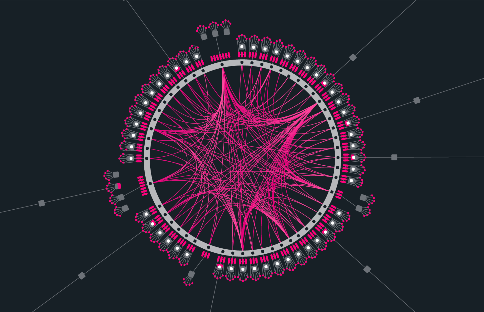
Beginner
NFTs in Polkadot Network
This tutorial provides a high-level overview of NFTs and the various approaches to NFTs within the Polkadot network. NFT stands for non-fungible token and refers to rows of arbitrary, project-specific, and non-interchangeable data that can be cryptographically proven to “belong” to someone. Ethereum is a popular general-purpose blockchain for NFTs but interactions with NFTs can be expensive due to the need for standards like ERC721. In the Polkadot network, NFTs 2.0 are under development and aim to optimize for complex NFT use cases with efficient and cost-effective solutions. Unique Network is a B2B NFT solution that aims to provide marketplace technology, while RMRK is a set of NFT 2.0 standards available in Solidity contracts, Rust code, and others in development.
Fungibility
NFT stands for non-fungible token. Fungibility means interchangeability inside of a group. In theory, a $20 bill is always worth $20 in a store and identical in value to any other $20 bill. It is not, however, fungible with a $1 or $100 dollar bill (outside its group).
A Pokemon™ trading card of a Charizard is non-fungible with a card of Squirtle, whereas editions of Charizard are fungible with each other.
Fungibility is a spectrum – what is fungible to some might not be fungible to others. In reality, Pokemon™ cards, the canonical example of non-fungible assets are more fungible than US dollar bills, each of which has a unique serial number that may be important to a government agency. The cards have no serial numbers [1].
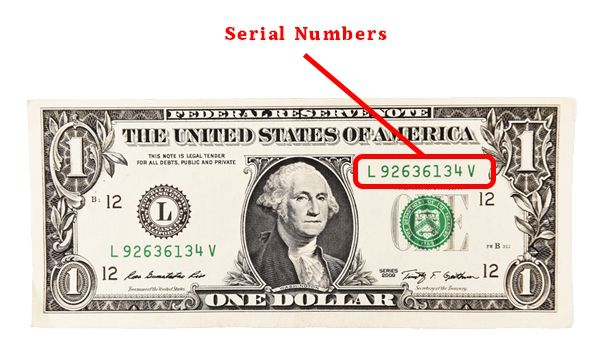
Additionally, a digital item like a “purple magic sword” in a game may be fungible with another visually identical sword if all the player cares about is the looks of their character. But if the other sword has a different function, and that function influences the outcome of an adventure the player is about to embark on, then visually identical swords are absolutely non-fungible.
Bearing that in mind, the simplest explanation of NFTs is that NFTs are rows of arbitrary, project-specific, and non-interchangeable data that can be cryptographically proven to “belong” to someone. This data can be anything – concert tickets, attendance badges, simple words, avatars, plots of land in a metaverse, audio clips, house deeds, mortgages, and more.
NFT Standards
A general-purpose blockchain is not built to natively understand the concept of NFTs. It is only natively aware and optimized for its own native tokens, but implementations built on such a chain are essentially “hacks”.
For example, Ethereum is a general-purpose blockchain that does not have the concept of “tokens” (fungible or not) built-in. Tokens in Ethereum are essentially spreadsheets of information to be interpreted and read in a certain way by various user interfaces. This way in which they should read them is called a standard.
The most widespread fungible token standard you may have heard of is ERC20, while the most widespread NFT standard is ERC721, followed closely by ERC1155. The downside of having to define these standards is that they are always instructions for how to read a spreadsheet pretending to serve information in a certain way, which by definition cannot be optimized. For this reason, even on a good day of extremely low network congestion, interactions with NFTs on any EVM chain will cost a few dollars but were on average around $100 per interaction (transfer, mint, sale) in 2021 on Ethereum.
This prevents use cases that go beyond the current craze of digital dust gathering NFTs on Ethereum – profile pictures, generative “look once and then put away” art, ENS addresses, and proof of attendance badges (which have since moved to the xDAI chain to save on gas fees).
A typical NFT on Ethereum
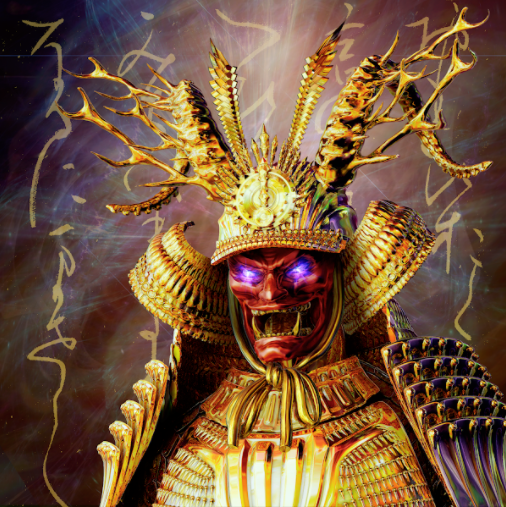
For the sake of comparison, we can refer to these as NFTs 1.0: static NFTs that are almost exclusively image-based collectibles of varying rarity.
NFTs 2.0: NFTs in Polkadot & Kusama
This is where Polkadot’s technology shines and where NFTs 2.0 come into play. By allowing heterogeneous application-specific shards to exist, builders can natively optimize for complex NFT use cases without tradeoffs that would make interacting with the system prohibitively inefficient and expensive in other environments.
The following NFT solutions exist and are under development in the Polkadot and/or Kusama ecosystems:
Unique network
Unique network, an NFT-specific blockchain offering innovations such as sponsored transactions, bundling fungible tokens with non-fungibles, and splitting NFTs into fungible tokens for partial ownership.
Unique Network have launched two NFT projects to date: Substrapunks as part of Hackusama, and Chelobricks as a promotion during Polkadot Decoded.
Unique Network focuses on B2B use cases, aiming to be an infrastructure provider for others to build on, rather than entering the NFT space themselves as an end-product.
Unique Network aims to make their marketplace technology open-source and whitelabel-friendly. In theory, it should be trivial to set up a new marketplace for your project using Unique’s technology. Unique network aims to be a parachain on Polkadot, and Quartz is their Kusama counterpart.
RMRK
RMRK is a set of NFT 2.0 standards developed in three distinct code flavors:
“Colored coins” approach, as on Bitcoin, originally developed as a “hack” on the Kusama chain. This is now deprecated, and it is recommended implementers use any of the other options.
Solidity contracts, compatible with any EVM blockchain in and outside the Polkadot ecosystem. Documented here
Rust code (Substrate pallets), compatible with any Substrate chain. Code is available here.
Additionally, two more flavors are in development:
Astar are developing the ink! version of RMRK: code here.
Gear Technologies are developing the Gear implementation: code and docs here.
The RMRK NFT 2.0 standards are a set of “NFT legos”, primitives that, when put together, allow a builder to compose an NFT system of arbitrary complexity without smart contracts.
NFT Legos
NFTs can own other NFTs, NFTs can equip other NFTs for visual change
NFTs can have multiple resources (different outputs based on context and resource priority)
NFTs can have on-chain emotes (reactions) for price discovery and social mechanics
NFTs have conditional rendering (e.g. show Mona Lisa as blushing if she got 50 kissy 😘 emoji)
NFTs can be governed by the community via fungible shareholder-tokens (fractionalization of NFTs)
NFT from Kanaria
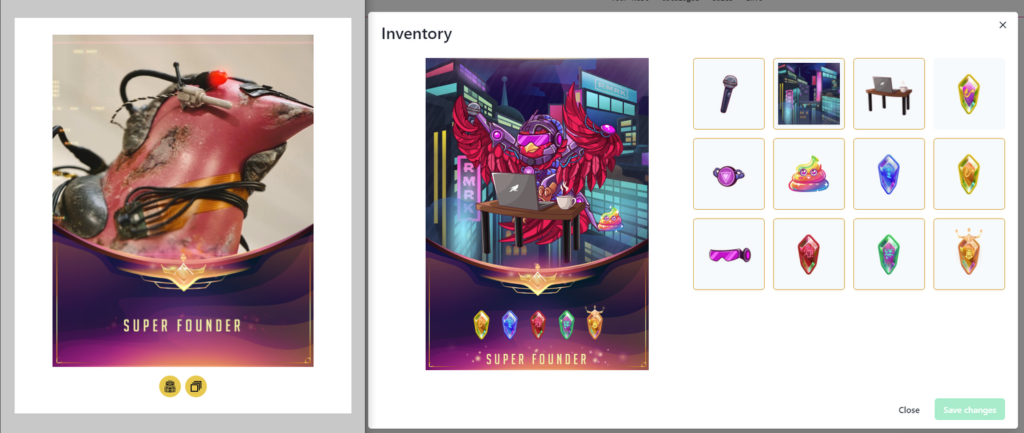
MULTI-RESOURCE NFTS
A multi-resource NFT (gif of statue, and SVG-composable dynamic NFT in one) that can also equip other NFTs from within its “inventory”.
Two marketplaces for RMRK-based NFTs exist with hundreds of projects already launched:
-
Singular, the official marketplace
For a complete introduction into RMRK, see this presentation or read the non-technical docs.
Efinity
Spearheaded by Enjin, the authors of Ethereum’s ERC1155 standard and makers of the Enjin wallet and Unity plugin, which allows easy implementation of NFTs into 3D games, Efinity is an NFT bridging chain coming to Kusama and Polkadot in 2022.
They plan to build a paratoken which would be a standard for token migration across different parachains in the Polkadot ecosystem, but also into and out of Ethereum and other EVM systems.
Astar
Astar Network and its sister network Shiden Network are the smart contract infrastructure in the Polkadot Ecosystem. Astar Ecosystem (“Astar”) supports NFTs developed with EVM smart contracts and WASM smart contracts.
Astar has all toolings available that every EVM NFT developer knows. The availability of those toolings makes the onboarding to Astar networks very attractive to any developer looking to explore the Polkadot Ecosystem. Astar has an active community of artists and NFT enthusiasts. Besides supporting all EVM toolings, Astar also bootstrapped the WASM smart contract environment for NFT developers writing smart contracts with ink! based on PSP34 (Polkadot Standards Proposals).
The main advantage of having a multi-virtual machine environment for NFT developers is that it will give more possibilities to the builders for the use case they are developing. With the support of WASM smart contracts, developers can develop solutions like RMRK with smart contracts.
Moonbeam
Moonbeam and its Kusama counterpart Moonriver are full EVM deployments with Ethereum RPC endpoints.
This means that the entire toolkit offered to other EVM chains (stacks like Hardhat, Remix, Truffle, Metamask, etc.) are available to Moonriver / Moonbeam users and developers, giving it a noticeable head start in attracting existing userbases.
Several dozen high profile teams are launching their products (or re-launching) on Moonriver / Moonbeam, however, it is essential to note that Moonbeam is an EVM chain and will therefore suffer from the same limitations as any other EVM chain in regards to customization and feature-richness of NFTs.
A notable advantage, however, is that Moonriver / Moonbeam is still a Substrate chain, meaning integration of custom pallets into the runtime is still possible, making NFT specific optimizations at the chain runtime level a reliable way to keep EVM compatibility of tools while at the same time optimizing storage and interactions for rich NFTs.
Uniques
Uniques is a FRAME pallet deployed on the Statemint and Statemine system parachains. It implements the most basic kind of NFT — a data record referencing some metadata. This metadata reference is mutable until frozen, so NFTs and their classes (entities derived from) are mutable unless specifically made immutable by the issuer.
Uniques takes a very bare-bones approach on purpose, to keep the Statemine / Statemint chain a simple balance-keeping chain for both fungible and non-fungibles.
These NFTs can be viewed and interacted with on RMRK’s Singular platform, by switching the top right menu from Kusama to Statemine or Statemint.

The can also be interacted with directly through the extrinsics tab of Statemine:
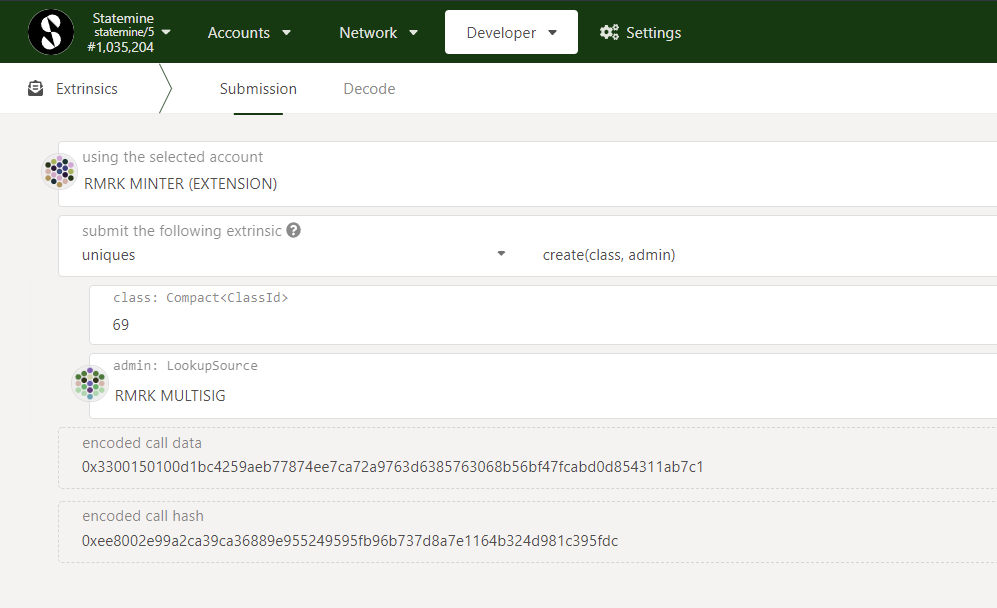
Basilisk
Basilisk is a Kusama parachain that provides liquidity for the ecosystem. It also has a full-featured NFT platform based on the Uniques pallet. One of the key features of Basilisk is that it allows minting NFTs with a royalty fee. This royalty fee is distributed to the original creator of the NFT via the runtime pallet. Additionally Basilisk offers a feature that allows creating a buy order for a specific NFT.
These NFTs can be viewed and interacted instantly on KodaDot.
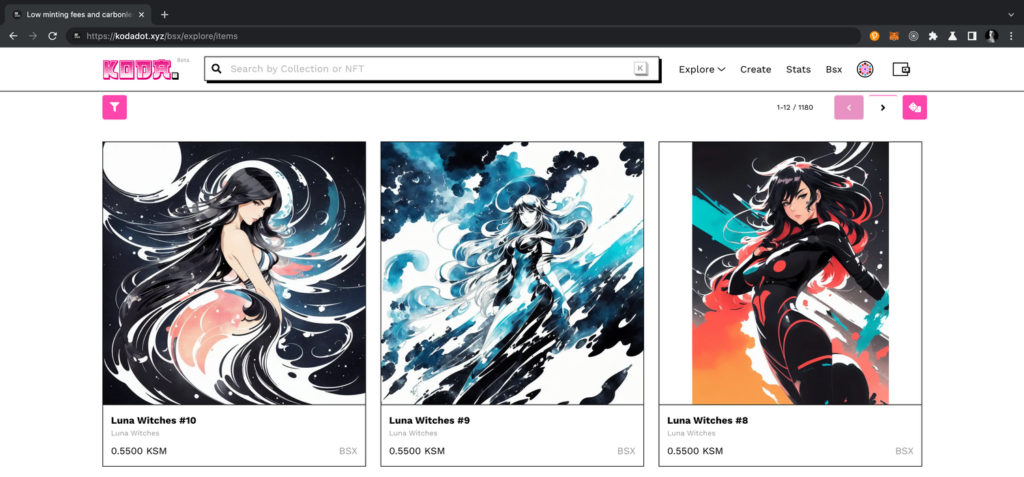
Bridging
Bridging to and from Substrate chains and EVM chains takes much effort but is a highly desired feature in the NFT industry. Merging the collector and customer base has significant implications, so multiple projects focus on making this possible.
Apart from RMRK (Substrate-to-Substrate seamless teleportation natively with XCMP) and Efinity (Paratoken), the following efforts are underway:
-
MyNFT: an EVM to EVM bridging effort.
-
RMRK <-> EVM Simplification bridge: a bridge developed during the RMRK hackathon for porting RMRK NFTs into simplified IOUs on EVM chains
